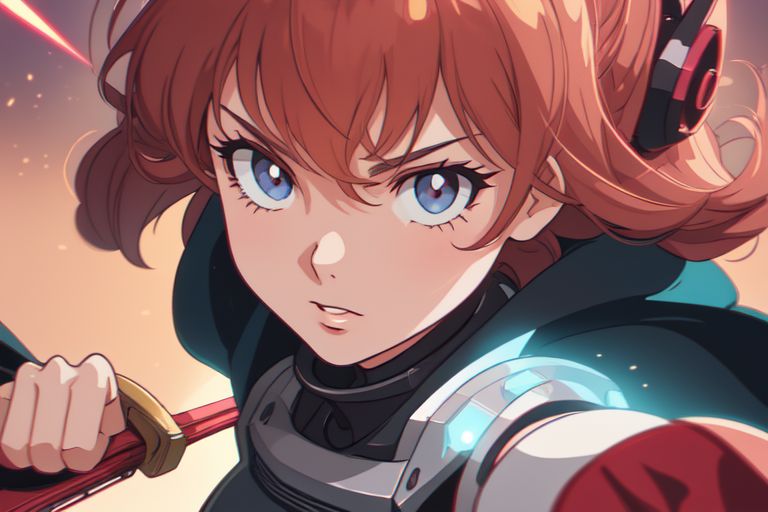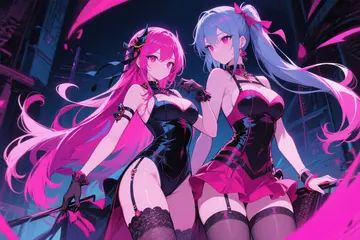Ever wondered how typing "cyberpunk cat astronaut" instantly generates a masterpiece? Let's unravel Stable Diffusion's wizardry - the AI that's democratised digital art creation. From text prompts to pixel-perfect images, we'll explore every gear in this creative machine ??

1. The Core Idea: Why Stable Diffusion ≠ Regular Photo Editing
Stable Diffusion doesn't just tweak existing images - it builds visuals from scratch using mathematical sorcery. Think of it as teaching a robot to dream based on written descriptions.
1.1 The Diffusion Dance: From Chaos to Creation
At its heart lies the diffusion process - a two-step tango:
Noise Party (Forward Diffusion): Gradually corrupts a clean image with random static until it becomes TV-snow chaos.
Cleanup Crew (Reverse Diffusion): A neural network learns to peel back the noise layers like an art restorer.
This 20-50 step denoising routine explains why generating HD images takes seconds ?? Pro tip: More steps usually mean finer details!
2. Secret Sauce: 3 Tech Marvels Powering Your AI Art
2.1 Latent Space: The Image Compressor You Never Knew
Instead of working with bulky 512x512 pixel grids, Stable Diffusion uses a 4x64x64 latent space - essentially a compressed ZIP file for visuals.
| Feature | Pixel Space | Latent Space |
|---|---|---|
| Dimensions | 768,432 (512x512x3) | 16,384 |
| Speed | ?? 3-5 min/image | ?? 5-15 sec/image |
2.2 VAE: The Bilingual Art Translator
The Variational Autoencoder (VAE) acts as:
Encoder: Shrinks images to latent codes (like saving a JPEG)
Decoder: Rebuilds latent codes into pixels (opening the JPEG)
Fun fact: Some custom VAEs (like SD 2.0's) add extra sharpness - your secret weapon for photorealistic eyes ???
2.3 U-Net: The Noise Whisperer
This neural network architecture:
Predicts which parts of the image are "noise pollution"
Uses cross-attention layers to align text prompts with visual elements
Works across multiple resolutions for coherent details
Pro artists often tweak U-Net's CFG Scale (7-12 range) to balance creativity vs prompt adherence ??
3. Your Turn! 5-Step Workflow to Create AI Masterpieces
Step 1: Craft Killer Prompts
?? Be specific: "A neon-lit samurai cat wearing VR goggles" > "Cool animal"
?? Use style tags: "Trending on ArtStation, unreal engine 5 render"
?? Negative prompts matter: "deformed fingers, extra limbs"
Step 2: Choose Your Model Flavor
Photorealism: Realistic Vision V6
Anime: Anything V5
Surreal Art: OpenJourney V4
Step 3: Dial in Parameters
| Parameter | Best For | Sweet Spot |
|---|---|---|
| Steps | Detail complexity | 30-50 |
| Sampler | Speed/quality balance | DPM++ 2M |
Step 4: Post-Processing Magic
Upscale 4x: Use ESRGAN or SwinIR models
Fix wonky hands: ADetailer plugin auto-corrects anatomy
Color grade: Add LUTs in Photoshop
Step 5: Iterate Like Da Vinci
Generate 4-8 variations per prompt
Combine best elements via img2img
Use ControlNet for pose consistency
Blend outputs in ComfyUI
4. Tools of the Trade: Must-Have Resources
4.1 For Newbies ??
DreamStudio: Web-based, no installation
Leonardo.AI: Free tier with daily credits
Automatic1111: Local install with plugin ecosystem
4.2 Pro Artist Toolkit ??
ControlNet: Pose/scene control
LoRA Models: Add specific styles (e.g., Pixar look)
StableSR: 8K upscaling without quality loss
5. FAQ: Quick Answers to Burning Questions
Q: Why do AI hands look cursed?
A: Training data gaps! Use "bad hands" negative prompts + ADetailer plugin.
Q: Can I sell Stable Diffusion art?
A: Yes, if using open-source models (check licenses!).
Q: Best GPU for SD?
A: RTX 3060 (12GB) for 512px images, RTX 4090 for 4K workflows.


